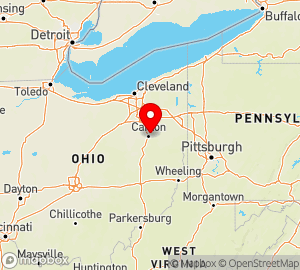Connecticut
Connecticut State Information

www.ct.gov
Area (sq mi):: 5543.33 (land 4844.80; water 698.53) Population per square mile: 724.50
Population 2005: 3,510,297 State rank: 0 Population change: 2000-20005 3.10%; 1990-2000 3.60% Population 2000: 3,405,565 (White 77.50%; Black or African American 9.10%; Hispanic or Latino 9.40%; Asian 2.40%; Other 6.80%). Foreign born: 10.90%. Median age: 37.40
Income 2000: per capita $28,766; median household $53,935; Population below poverty level: 7.90% Personal per capita income (2000-2003): $41,489-$42,972
Unemployment (2004): 4.90% Unemployment change (from 2000): 2.60% Median travel time to work: 24.40 minutes Working outside county of residence: 24.80%
List of Connecticut counties:
Connecticut Parks
- US National Parks
- Urban Parks
- State Parks
- National Wildlife Refuges
- National Scenic Byways
- National Heritage Areas
Connecticut
Fifth state; adopted the U.S. Constitution on January 9, 1788
State capital: Hartford
Nickname: The Constitution State
State motto: Qui Transtulit Sustinet (Latin “He Who Transplanted Still Sustains”)
State aircraft: Corsair F4U
State animal: Sperm whale (Physeter macrocephalus)
State bird: American robin (Turdus migratorius)
State cantata: “The Nutmeg”
State composer: Charles Edward Ives (1874-1954)
State fish: American shad
State flagship: Schooner Amistad
State flower: Mountain laurel (Kalmia latifolia)
State folk dance: Square dance
State fossil: Eubrontes giganteus
State hero: Nathan Hale (1755-1776)
State heroine: Prudence Crandall (1803-1890)
State insect: European (praying) mantis (Mantis religiosa)
State mineral: Garnet
State shellfish: Eastern oyster (Crassostrea virginica)
State ship: USS Nautilus (first nuclear-powered submarine)
State song: “Yankee Doodle”
State tartan: Connecticut State Tartan
State tree: Charter oak or white oak (Quercus alba)
More about state symbols at:
www.kids.ct.gov
SOURCES:
AmerBkDays-2000, p. 41
AnnivHol-2000, p. 7
STATE OFFICES:
State web site:
www.ct.gov
Office of the Governor
210 Capitol Ave
Hartford, CT 06106
860-566-4840
fax: 860-524-7395
www.ct.gov/governorrell
Secretary of State
210 Capitol Ave
Rm 104 Hartford, CT 06106 860-509-6200 fax: 860-509-6209 www.sots.state.ct.us
Connecticut State Library 231 Capitol Ave Hartford, CT 06106 860-757-6510 fax: 860-757-6503 www.cslib.org
Legal Holidays:
Connecticut
a state in the northeastern USA, in New England. On the south it borders Long Island Sound. Area, 12,900 sq km. Population, 3 million (1970), of which 77.4 percent is urban. The capital and largest city is Hartford. A great portion of the state is occupied by the sloping northern spurs of the Appalachians (elevations to 587 m); in the central part there is the broad valley of the Connecticut River. The shores of Long Island Sound are uneven, forming many convenient harbors. The climate is temperate and maritime, and the weather is unstable.
Connecticut is an industrial state. Of its economically active population 40 percent is engaged in industry. Various branches of machine building and metalworking employ about two-thirds of the 475,000 people that work in manufacturing (1969), which uses mainly imported raw materials and fuel. The leading branches are electrical engineering and radio electronics and the production of machine tools, equipment, instruments, aircraft engines, helicopters, submarines (including atomic submarines), bearings, and clocks. Other important industries are chemicals, rubber, printing, textiles, haberdashery, and hats.
Intensive suburban agriculture employs less than 3 percent of the population; its main branches are dairy livestock and poultry raising, which account for three-fifths of the commodity output of agriculture. In 1970 the state had 122,000 head of cattle, of which 74,000 were milch cows. There are tobacco plantations in the valley of the Connecticut River. Southwestern Connecticut borders on New York City and is virtually part of its suburban zone.
V. M. GOKHMAN
Connecticut
a river in northeastern USA. Length, 552 km; basin area, 29,000 sq km. It rises in lakes in the northern part of the Appalachians, flows south through a deep graben valley, forms the “Falls Line,” and empties into Long Island Sound in the Atlantic Ocean. It is fed by snow and rain and is in high water in April and May. The average water flow at the mouth is 606 cu m per sec. The rapids and waterfalls of the Connecticut River are used by hydroelectric power plants. Bypass canals make the river navigable for small oceangoing ships as far as Hartford and for river vessels as far as Holyoke.